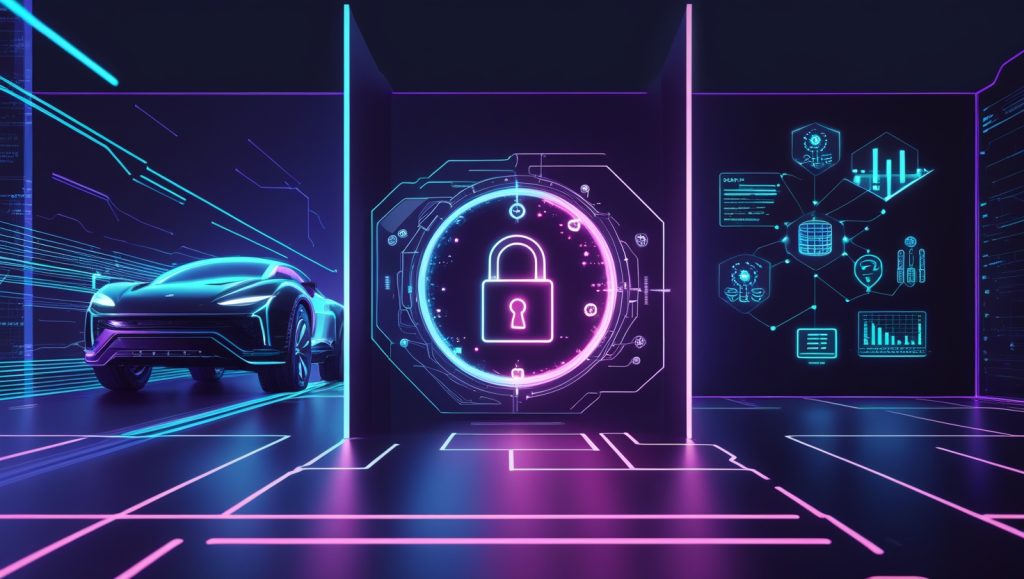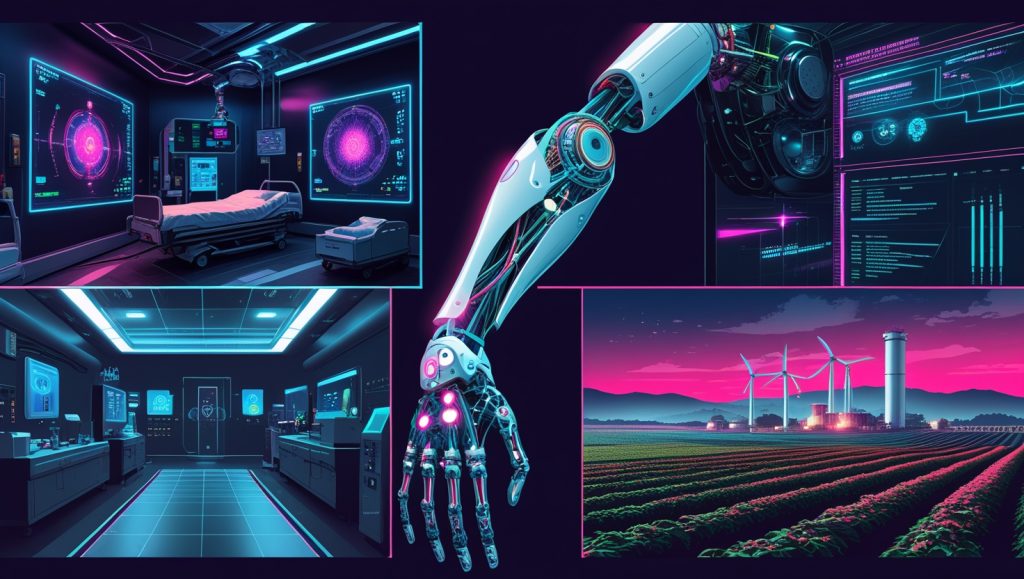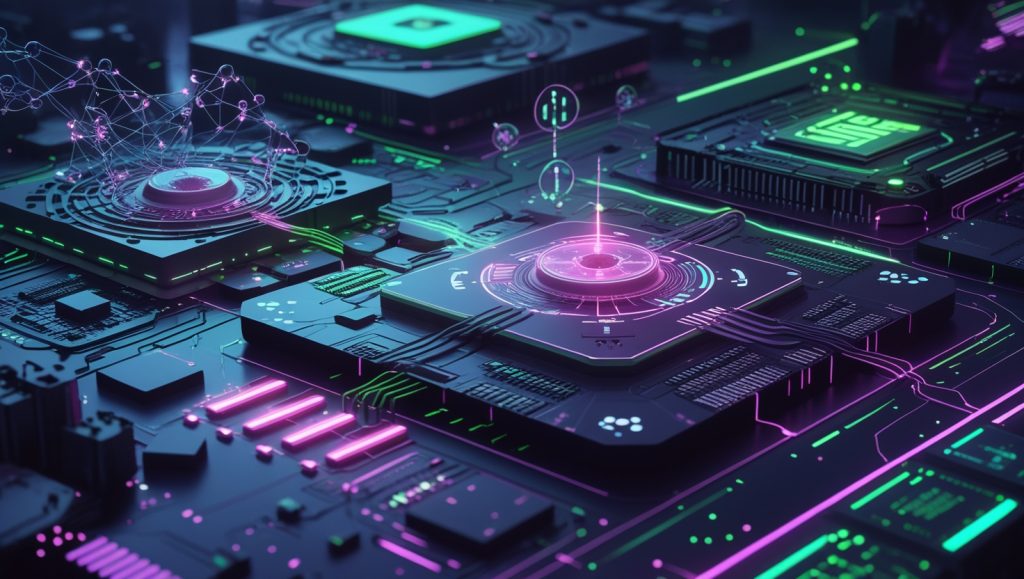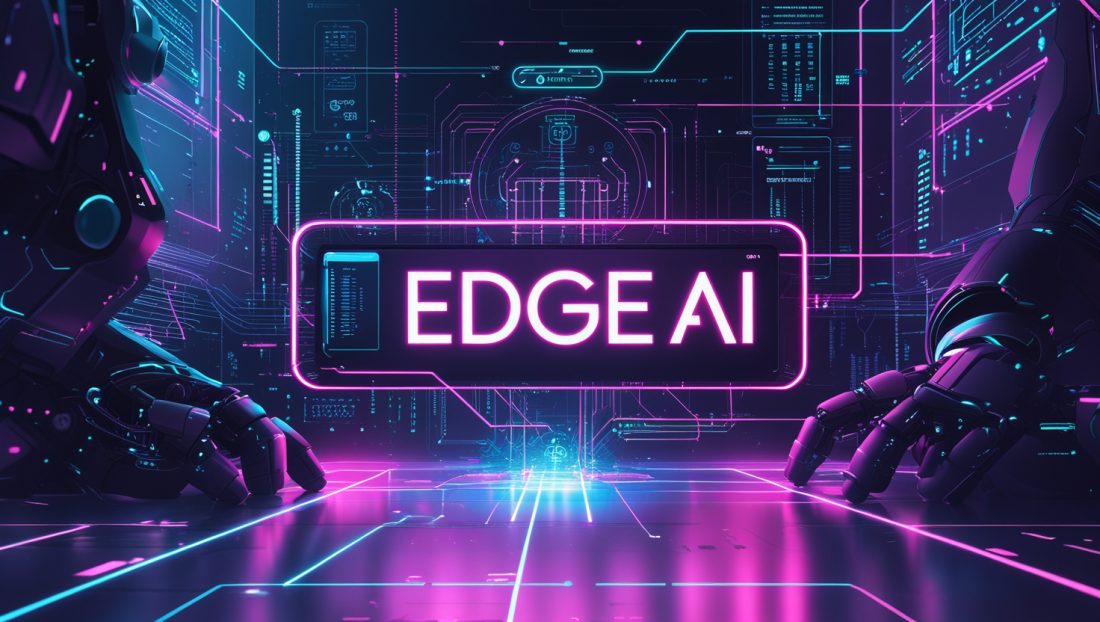In an era where milliseconds determine outcomes and data sovereignty is paramount, Edge AI has transitioned from a niche innovation to a cornerstone of modern enterprise strategy. By enabling devices to process data locally using embedded artificial intelligence, Edge-AI solutions eliminate the latency, privacy risks, and scalability bottlenecks inherent in cloud-dependent systems. But what makes this shift not just advantageous but essential for industries racing toward digital transformation? This deep dive explores the technological, economic, and societal forces driving Edge-AI adoption—and why organizations that ignore it risk obsolescence.
The Evolution of Edge AI: From Concept to Critical Infrastructure
What Is Edge AI?
Edge AI merges edge computing—decentralized data processing at the source—with machine learning algorithms that operate autonomously on devices. Unlike traditional cloud AI, which requires data transmission to remote servers, Edge-AI solutions analyze information in real time on sensors, cameras, or IoT devices. This paradigm shift is akin to equipping a factory robot with its own “brain” rather than relying on a distant control room. For a deeper look at how robotics is evolving with such technologies, check out Why Robotics in 3D Printing Unlocks Potential.
The technology gained momentum with advancements in microchip design, such as NVIDIA’s Jetson modules and Google’s Tensor Processing Units (TPUs), which enable powerful AI computations on low-power devices. For instance, the 2020 launch of Apple’s M1 chip, with its 16-core Neural Engine, demonstrated how consumer hardware could perform complex tasks like image recognition without cloud dependency—an early win for Edge AI solutions.
Why the Timing Is Perfect: A Convergence of Technologies
Three seismic shifts have propelled Edge AI solutions into the mainstream:
- The IoT Explosion: By 2025, 75 billion IoT devices will generate 79 zettabytes of data (IDC). Transmitting this deluge to the cloud is impractical, making Edge-AI solutions a necessity for handling this scale efficiently.
- 5G Networks: With speeds up to 20 Gbps and latency under 1 ms, 5G enables real-time communication between edge devices, amplifying the power of Edge-AI solutions.
- Privacy Regulations: GDPR, CCPA, and China’s Data Security Law mandate local data handling, making centralized cloud models legally risky and pushing adoption of Edge-AI solutions.
This convergence isn’t just tech hype—it’s a structural shift. Learn more about how China’s regulatory landscape is shaping tech in Why China’s Industrial Robot Dominance Is Reshaping Global Manufacturing.
Why Edge AI? Answering the Core Questions

1. Why Is Edge AI Faster Than Cloud-Based Alternatives?
Latency isn’t just an inconvenience—it’s a dealbreaker in critical applications. Consider autonomous vehicles: a Tesla Model Y traveling at 70 mph covers 4.6 feet per millisecond. Cloud round-trip latency (~100 ms) would delay collision avoidance by 460 feet—enough to cause catastrophe. By processing sensor data on-board, Tesla’s Full Self-Driving (FSD) system reacts within 10 ms, a 90% reduction in decision time. Edge AI’s speed is non-negotiable here.
This applies to healthcare too, where GE Healthcare’s portable ultrasound Vscan Air uses Edge AI to diagnose cardiac anomalies in rural clinics without internet. Dr. John Smith, a radiologist at Mayo Clinic, notes: “In stroke cases, every minute saved improves outcomes by 10%. Edge-AI makes the difference between recovery and disability.” See more healthcare breakthroughs in Why AI Solved a Superbug Crisis in Two Days.
2. Why Does Edge AI Enhance Data Privacy?
When British Airways suffered a 2018 cloud breach exposing 380,000 payment records, losses exceeded £20 million. Edge AI minimizes such risks by keeping sensitive data on-premises. For example, Philips’ HealthSuite Platform processes patient vitals on hospital-edge servers, ensuring HIPAA compliance. A 2023 study by Palo Alto Networks found Edge-AI reduced healthcare data breaches by 62% compared to cloud systems. Curious about privacy in robotics? Check Why Service Robots in China Drive Humanoid Growth.
3. Why Is Edge AI More Cost-Effective in the Long Run?
Cloud costs spiral with data volume. A single autonomous vehicle generates 4 TB of data daily. Sending this to the cloud would cost $12,000/month per vehicle (AWS S3 pricing). Walmart slashed its cloud bills by 40% after deploying Edge AI for inventory tracking, as revealed in their 2022 earnings call. Over time, Edge-AI proves its economic edge. Explore cost-saving tech in Why Robot Subscription Services Are the Next Big Revenue Stream.
Edge AI in Action: Industry Transformations

Healthcare: Revolutionizing Diagnostics and Treatment with Edge AI Solutions
During the COVID-19 pandemic, Singapore’s Tan Tock Seng Hospital deployed Edge AI solutions in thermal scanners to screen patients without compromising privacy. The system detected fevers with 98% accuracy while avoiding facial recognition, sidestepping ethical concerns—a textbook case of Edge-AI solutions balancing utility and responsibility. Dive into Singapore’s tech ecosystem in Singapore Robotics Ecosystem: Robonexus.
Case Study: AI-Powered Prosthetics Enhanced by Edge AI Solutions
Open Bionics’ Hero Arm uses embedded ML to interpret muscle signals, enabling amputees to grip objects within 0.2 seconds. Unlike cloud-dependent models, it functions seamlessly in areas with poor connectivity, like disaster zones, thanks to Edge AI solutions. This rugged reliability is a game-changer—see similar resilience in Why Untethered Deep-Sea Robots Revolutionize Ocean.
Manufacturing: Predictive Maintenance at Scale with Edge AI Solutions
Siemens’ edge-enabled gas turbines in Egypt’s Beni Suef power plant analyze vibration data locally with Edge AI solutions to predict failures 3 weeks in advance. This reduced unplanned downtime by 55%, saving $17 million annually. The fearless efficiency here is undeniable—contrast this with Why AI in Robotics Is Failing to see where others stumble.
Agriculture: Precision Farming in Resource-Scarce Regions Powered by Edge AI Solutions
In Kenya, where only 15% of farmland has internet, startup UjuziKilimo uses solar-powered Edge AI solutions in sensors to analyze soil moisture and nutrient levels. Farmers receive real-time irrigation advice via SMS, boosting yields by 30%. This is Edge-AI solutions at its best—accessible, impactful, and scalable. For more on sustainable tech, check Why Robotics in Recycling Is Reshaping Global.
Navigating the Challenges: From Theory to Reality
Hardware Limitations: Balancing Power and Performance in Edge AI Solutions
Early Edge AI devices struggled with energy efficiency. Intel’s 2023 Loihi 2 neuromorphic chip changed the game, mimicking the human brain’s efficiency. It processes data 1,000x faster than CPUs while using 1/100th the power—critical for remote oil rigs and wind farms relying on Edge-AI solutions. Learn about neuromorphic advancements in Neuromorphic AI Chips.
Model Management: The Over-the-Air (OTA) Revolution for Edge AI Solutions
Managing thousands of edge devices requires robust OTA frameworks. Tesla’s 2024 FSD v12 update showcased this: 2 million vehicles received 50 GB of model updates in 48 hours without dealership visits, all powered by Edge AI solutions. This seamless scalability is why Edge-AI solutions are rewriting the rules—see more in Why Carmakers Are Betting Billions on High-Tech Robots.
Interoperability: Bridging the Fragmented Ecosystem with Edge AI Solutions
The lack of standardization hampers scalability. The Linux Foundation’s EdgeX Foundry, adopted by Dell and Samsung, provides open-source APIs to unify sensors from 150+ vendors, smoothing the path for Edge AI solutions. Fragmentation’s a real beast—contrast this with Why Self-Healing Robotics Might Be the Most for a look at cutting-edge unity.
The Future of Edge AI: Beyond the Hype Cycle

Federated Learning: Collaborative Intelligence Without Data Sharing via Edge AI Solutions
Google’s 2023 partnership with 20 hospitals trained an Edge AI solutions model to detect rare cancers using federated learning. Institutions shared model updates—not patient data—achieving 94% accuracy while complying with GDPR. This is Edge-AI solutions flexing its ethical muscle—explore more in Why Explainable AI (XAI) Is the Future.
AI Chips: The Race for Dominance in Edge AI Solutions
Startups like Graphcore and Cerebras are challenging NVIDIA with wafer-scale chips optimized for Edge AI solutions. In 2024, Graphcore’s Bow AI processor outperformed NVIDIA’s A100 by 40% in image processing tasks, signaling a seismic shift. The chip wars are heating up—see the stakes in NVIDIA DGX Personal AI Computers Gamechanger. For a fresh take on where this race is headed in 2025, check out “15 Edge Computing Trends to Watch in 2025 and Beyond” by Informa TechTarget, which dives into the latest AI chip advancements driving Edge AI forward.
Sustainability: Green AI at the Edge
Edge AI solutions deliver monumental energy savings. Ericsson estimates 5G-enabled Edge-AI solutions could reduce global CO2 emissions by 15% by 2030 by optimizing smart grids and logistics. This green edge is a big deal—dig into climate tech in Why Robotics Is the Secret Weapon in the Fight Against Climate Change.
The Edge Is the New Center
Edge AI isn’t merely an incremental upgrade—it’s redefining how humanity interacts with technology. From enabling rural healthcare to slashing carbon footprints, its implications are as profound as the internet’s rise. As Amazon CTO Werner Vogels declared at re:Invent 2023: “The future isn’t cloud-first or edge-first. It’s AI-everywhere.” Enterprises that embed Edge-AI into their DNA will lead the next industrial revolution; those lagging will grapple with inefficiency and irrelevance. For a fearless take, see Why AI as the Last Invention Could End Humanity.
